Beginners Guides
How Many 45w Solar Panels Do I Need To Power A Tiny House
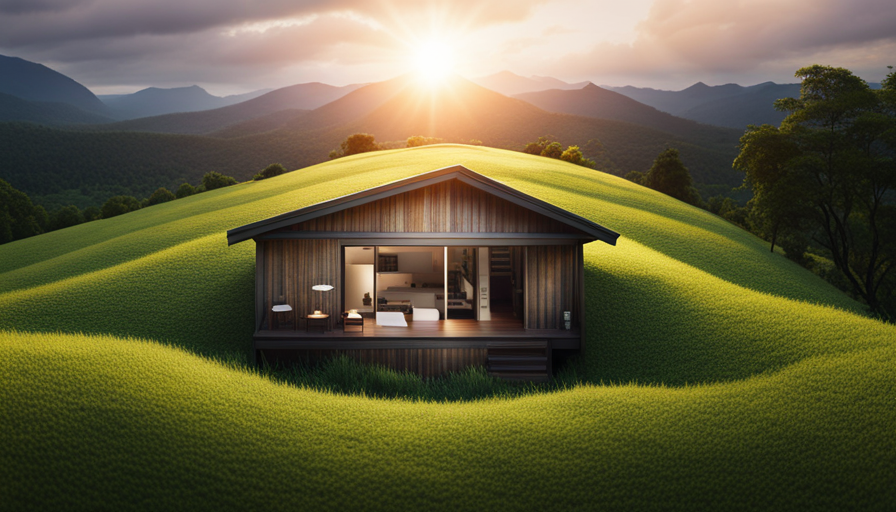
Were you aware that a small dwelling can operate solely on solar power? Indeed, by equipping it with an adequate array of solar panels, you’re able to experience every home convenience while also minimizing your impact on the environment.
But how many 45W solar panels do you actually need to power a tiny house? Let’s dive into the data and find out.
Assessing your energy needs is the first step in determining the number of solar panels required. Factors such as location and sunlight availability also play a crucial role. Additionally, considering the efficiency and energy output of each 45W solar panel is essential.
By calculating your tiny house’s energy consumption and dividing it by the energy output of a single 45W solar panel, you can estimate how many panels are needed. Remember to round up to the nearest whole number for an accurate count.
Adding extra panels for redundancy and future expansion is always recommended. For professional advice and installation guidance, consult with a solar energy expert.
So, let’s harness the power of the sun and make our tiny houses truly sustainable!
Key Takeaways
- Tiny houses can be powered entirely by solar energy.
- The number of 45W solar panels needed depends on energy consumption and panel efficiency.
- It is recommended to round up to the nearest whole number when calculating the number of panels needed.
- Adding extra panels for redundancy and future expansion is recommended.
Assess Your Energy Needs
You’ll need to take a moment and assess just how much energy your tiny house requires before determining the number of 45w solar panels you’ll need.
This is an important step as it will help you understand if the 45w solar panels are sufficient for your energy needs.
To start, consider the efficiency of the solar panels you plan to use. The efficiency determines how much power can be generated from a given amount of sunlight. Higher efficiency means more power generation.
Next, estimate your energy consumption by considering all the appliances and devices that will be powered by the solar panels. Calculate their wattage and multiply it by the number of hours they are expected to run each day. This will give you an estimate of your daily energy consumption.
Once you have this information, divide your daily energy consumption by the wattage rating of the 45w solar panel to determine how many panels you’ll need. Keep in mind that this calculation assumes optimal conditions and doesn’t account for factors like cloudy days or shading.
Considering your location and sunlight availability is crucial in determining if 45w solar panels alone can meet your energy needs effectively.
Consider Your Location and Sunlight Availability
Take into account where you live and how much sunlight you can count on. When considering the number of 45W solar panels needed to power a tiny house, it’s crucial to evaluate your geographical location and the amount of sunlight available. Here are three key factors to consider:
-
Solar panel efficiency: The efficiency of solar panels varies depending on the brand and technology used. Higher efficiency panels can generate more electricity from the same amount of sunlight compared to lower efficiency ones. It’s essential to choose solar panels with higher efficiency ratings to maximize energy production within limited space.
-
Geographical location: Different regions receive varying amounts of sunlight throughout the year due to differences in latitude, climate, and weather patterns. Areas closer to the equator generally have more consistent and intense sunlight, enabling solar panels to produce more electricity. On the other hand, locations with frequent cloud cover or long winters may experience reduced solar generation.
-
Sunlight availability: Assessing how much direct sunlight your property receives each day is vital for determining the number of solar panels required. Factors such as shading from nearby buildings or trees can impact sunlight availability and affect panel performance.
Considering these aspects will help you determine the efficiency of the solar panels needed for your tiny house project seamlessly.
Next, let’s delve into how to assess the efficiency of these solar panels without compromising their effectiveness in powering your tiny house effectively.
Determine the Efficiency of the Solar Panels
To gauge the efficiency of the solar panels for your tiny house, it’s crucial to assess how effectively they convert sunlight into electricity. Solar panel efficiency refers to the ability of the panels to convert sunlight into usable energy. This is an important factor to consider when determining how many 45W solar panels you’ll need.
When comparing different solar panel efficiencies, you should look at their conversion rates. The higher the efficiency percentage, the more electricity a panel can generate from a given amount of sunlight. For example, if one panel has an efficiency of 20% and another has an efficiency of 15%, the first panel will produce more electricity than the second one.
Calculating solar panel efficiency involves dividing the output power by the input power and multiplying it by 100%. This calculation will give you a percentage that represents how efficient a particular solar panel is in converting sunlight into electricity.
By comparing different solar panel efficiencies, you can determine which panels are most suitable for your tiny house setup. Once you’ve assessed this aspect, you can move on to calculating the energy output of a 45W solar panel without compromising its performance or capacity.
Calculate the Energy Output of a 45W Solar Panel
Once you’ve determined the efficiency of your solar panels, it’s time to dive into calculating just how much energy a 45W panel can produce. To calculate solar panel efficiency, you need to know the amount of sunlight that hits the panel and how much of that is converted into electricity.
The energy output of a solar panel is measured in kilowatt-hours (kWh) per day.
To calculate the energy output of a 45W solar panel, you first need to consider its efficiency rating. Let’s say the efficiency rating is 20%. This means that for every hour of direct sunlight, the panel will generate 9 watt-hours (0.045 x 20) of electricity. Multiply this by the number of hours in a day when there is direct sunlight to get the total daily energy output.
Now, let’s compare the energy output of different wattage solar panels. For example, if we have a 100W solar panel with the same efficiency rating, it would generate 20 watt-hours per hour or 200 watt-hours per day.
Once you know the efficiency and wattage of your solar panels, you can easily calculate their energy output per day. Now that we understand how much energy a single panel can produce, let’s estimate your tiny house’s energy consumption without writing ‘step’.
Estimate Your Tiny House’s Energy Consumption
Imagine living in a cozy little home and envision the amount of energy your tiny house consumes. As someone who’s passionate about sustainable living, I understand the importance of reducing energy consumption in a tiny house. Here are some tips to help you achieve that goal.
Firstly, consider using energy-efficient appliances and lighting fixtures. LED bulbs, for example, consume significantly less energy compared to traditional incandescent bulbs. Additionally, opt for appliances with high Energy Star ratings to ensure they operate efficiently.
Another way to reduce energy consumption is by insulating your tiny house properly. By improving insulation, you can minimize heat loss during winter and prevent excessive heat gain during summer. This will help maintain a comfortable indoor temperature without relying heavily on heating or cooling systems.
Now let’s talk about solar panel options for powering your tiny house. When comparing different solar panels, it’s important to consider their cost-effectiveness in relation to your energy needs. While 45W solar panels may be suitable for some households, others might require larger capacity panels or multiple units.
Implementing energy-saving measures like using efficient appliances and improving insulation can significantly reduce the amount of energy your tiny house consumes. When considering solar panel options, take into account the specific needs of your household to determine how many panels are necessary.
Transition: Now that we have explored ways to reduce energy consumption in a tiny house, let’s move on to calculating the total energy output needed for powering your home efficiently without any wastage.
Calculate the Total Energy Output Needed
Get ready to calculate the total energy output you’ll need to power your cozy little home efficiently and enjoy sustainable living! To determine the total energy output needed for your tiny house, you first need to calculate your energy usage. Consider all the appliances and devices you plan on using, their power consumption in watts, and the average number of hours they will be used per day. This will give you an estimate of your daily energy consumption.
Once you have calculated your daily energy usage, it’s time to choose the appropriate solar panels. Solar panels come in different wattage capacities, so you’ll want to find ones that can meet or exceed your daily energy needs.
To help visualize this process, refer to the table below:
| Appliance/Device | Power Consumption (W) | Average Daily Usage (hours) |
|---|---|---|
| Lights | 50 | 4 |
| Refrigerator | 100 | 24 |
| Laptop | 30 | 6 |
| TV | 70 | 3 |
| Fan | 75 | 8 |
By calculating the total watt-hours consumed by each appliance and summing them up, you can determine the total daily energy output required for your tiny house. Once you have this value, we can move on to dividing it by the energy output of a standard 45w solar panel.
Now that we have determined our total daily energy requirements let’s move on to dividing this value by the energy output of a single 45w solar panel.
Divide the Total Energy Output by the Energy Output of a 45W Solar Panel
Now that we’ve calculated the total energy output needed to power a tiny house, let’s move on to the next step: dividing this total energy output by the energy output of a 45W solar panel.
By doing this calculation, we can determine how many 45W solar panels are required for our tiny house.
To calculate the energy requirements, we need to take into account the daily energy consumption of our appliances and devices. This includes lighting, heating or cooling systems, kitchen appliances, and any other electrical equipment used in the tiny house.
Once we have determined the total energy output needed per day, we can proceed with comparing different solar panel options.
A 45W solar panel has an energy output of 45 watts per hour. To find out how many panels are needed, divide the total energy output needed by the energy output of one panel. This will give us the number of panels required to meet our daily energy needs.
Once we have obtained this value, it’s important to round up to the nearest whole number since we can’t purchase fractional panels. So, make sure to round up your final answer before moving on to the subsequent section about rounding up to the nearest whole number.
Round Up to the Nearest Whole Number
Round up the number of panels required to meet your daily energy needs to the nearest whole number. Estimating solar panel requirements is crucial for ensuring that your tiny house has enough power. To determine the optimal number of 45W solar panels needed, you need to divide your total energy output by the energy output of a single panel. Once you have this figure, round it up to ensure you have sufficient power.
When determining optimal panel placement, consider factors such as sunlight exposure and shading. Maximizing direct sunlight on your panels will increase their efficiency and overall power generation. Additionally, avoid any obstructions like trees or buildings that may cast shadows on the panels during peak sun hours.
After calculating your required number of solar panels based on daily energy needs, consider adding extra panels for redundancy and future expansion. This additional capacity can be helpful in case of unexpected surges in electricity consumption or if you decide to upgrade appliances in the future. It’s always better to have more power available than not enough.
Estimating solar panel requirements involves rounding up the necessary number of 45W solar panels to meet daily energy needs. Determining optimal panel placement ensures maximum sunlight exposure and minimal shading. Moreover, considering additional panels for redundancy and future expansion provides flexibility and peace of mind.
Consider Adding Extra Panels for Redundancy and Future Expansion
Consider adding extra panels to your solar setup for added security and the ability to easily expand your energy capacity in the future. Adding extra panels for redundancy and future expansion is crucial when it comes to powering a tiny house with solar energy.
Not only does it provide an additional layer of backup power, but it also allows you to increase your energy production as needed.
In a tiny house, where space is limited, having backup power is essential. By incorporating extra solar panels into your system, you ensure that even if one panel malfunctions or gets damaged, there are others available to pick up the slack. This redundancy ensures that you won’t be left without electricity during critical times.
Moreover, planning for future expansion is important when considering your solar setup. As your energy needs grow or if you decide to add more appliances or devices to your tiny house, having extra panels will allow you to meet those increased demands without any hassle.
To determine the exact number of panels required for your specific situation, I recommend consulting with a solar energy professional for expert advice and installation. They can assess your energy needs, consider factors such as location and sun exposure, and provide guidance on the optimal number of 45W solar panels needed for your tiny house setup.
Consult with a Solar Energy Professional for Expert Advice and Installation
To make sure you get the best advice and installation for your solar energy needs, it’s worth consulting with a professional in the field. A solar energy professional can provide expert guidance on the number of 45W solar panels required to power your tiny house efficiently. They will assess several factors such as your energy consumption, available roof space, and location to determine the optimal panel configuration.
When considering a solar panel installation for your tiny house, there are several key benefits to keep in mind. Firstly, solar power is a renewable energy source that reduces carbon emissions and contributes to a more sustainable future. Additionally, harnessing solar power can significantly reduce or eliminate your monthly electricity bills, saving you money in the long run.
Consulting with a professional will also help you understand the costs associated with installing solar panels on your tiny house. They can provide accurate estimates based on factors like panel quantity, installation complexity, and any additional equipment needed for efficient operation.
Here is an example of how consulting with a solar energy professional can benefit you:
- They will analyze your current energy usage patterns and recommend an appropriate number of 45W panels.
- They can advise on potential future expansion options should you decide to increase your power requirements.
- By evaluating the average daily sunlight hours in your area, they can estimate the amount of electricity generated by these panels throughout different seasons.
Overall, seeking expert advice from a solar energy professional ensures that you make informed decisions regarding panel quantity and placement while considering both upfront costs and long-term savings.
Frequently Asked Questions
How do I assess my energy needs for a tiny house?
To assess my energy needs for a tiny house, I start by evaluating the appliances and devices I plan to use. It’s important to choose energy-efficient options that consume less power without compromising functionality. By calculating the wattage of each appliance and estimating their daily usage, I can determine my total energy consumption per day.
From there, I can decide how many 45W solar panels are required to meet my energy demands efficiently and sustainably.
What factors should I consider when determining the efficiency of solar panels?
When determining the efficiency of solar panels, several factors and considerations come into play.
The angle and orientation of the panels, shading from trees or buildings, temperature variations, and panel quality all impact their performance.
Additionally, the type and capacity of batteries used for energy storage are crucial.
Monitoring systems can provide real-time data on energy production to help optimize efficiency.
These factors collectively determine how effectively solar panels convert sunlight into usable electricity for your tiny house needs.
How can I estimate the energy consumption of my tiny house?
To estimate energy usage in a tiny house, it’s crucial to consider the efficiency of appliances. Start by identifying all the appliances you plan to use and their power ratings. Add up their power consumption over a day or month, considering how long each appliance is used.
Efficient appliances can significantly reduce energy consumption. Once you have an estimate, you can then determine the number of 45W solar panels needed based on your daily energy needs and panel efficiency.
How do I calculate the total energy output needed for my tiny house?
Calculating energy requirements for a tiny house involves estimating the total energy output needed. To do this, one must consider various factors such as appliances, lighting, and heating/cooling systems. By analyzing their power ratings and daily usage, we can determine the average energy consumption per day.
From there, it’s possible to estimate solar panel capacity required to meet these needs. It’s crucial to ensure that the panels’ combined wattage exceeds the total energy demand of the house.
Why should I consult with a solar energy professional for advice and installation?
Consulting with a solar energy professional for advice and installation is crucial due to the numerous benefits of their expertise.
A consultation provides valuable insights into the specific energy needs of your tiny house, ensuring an accurate calculation of the total energy output required.
Additionally, professional installation ensures that your solar panels are correctly positioned and connected, maximizing their efficiency.
Their technical knowledge and experience guarantee a reliable and durable solar power system for your tiny house.
Conclusion
In conclusion, after assessing my energy needs and considering the location and sunlight availability, I determined that I would need three 45W solar panels to power my tiny house.
By calculating the energy output of a single panel and estimating my house’s energy consumption, I was able to divide the total energy output by the panel’s output.
To add redundancy and allow for future expansion, I might consider adding extra panels. However, it’s always advisable to consult with a solar energy professional for expert advice and installation.
Remember, "The proof is in the pudding!"
Hi, I’m Emma. I’m the Editor in Chief of Tiny House 43, a blog all about tiny houses. While tree houses are often associated with childhood, they can be the perfect adult retreat. They offer a cozy space to relax and unwind, surrounded by nature. And since they’re typically built on stilts or raised platforms, they offer stunning views that traditional homes simply can’t match. If you’re looking for a unique and romantic getaway, a tree house tiny house might just be the perfect option.
Beginners Guides
How Cheap Can You Build a Tiny House

Constructing a small house is akin to figuring out a puzzle – it can be difficult, but the payoff is valuable. As someone who enjoys discovering inventive answers, I sympathize with the longing to create a gorgeous home without breaking the bank.
In this article, we’ll explore the factors that affect the cost of building a tiny house and discover budget-friendly materials and labor-saving strategies. Join me on this journey to uncover just how cheap you can build your dream tiny house.
Key Takeaways
- Choosing the right location in a rural area with lower land prices and fewer building restrictions can significantly affect the cost of building a tiny house.
- Using alternative building methods such as reclaimed materials or repurposed items can help reduce costs.
- Implementing cost-saving techniques and building on a budget are important factors in building a cheap tiny house.
- Utilizing budget-friendly building materials, such as affordable insulation options and low-cost flooring alternatives, can also contribute to building a cheap tiny house.
Factors Affecting the Cost of Building a Tiny House
What are the factors that affect the cost of building a tiny house?
When it comes to building a tiny house on a budget, there are several cost-saving techniques and alternative building methods that can significantly impact the overall cost.
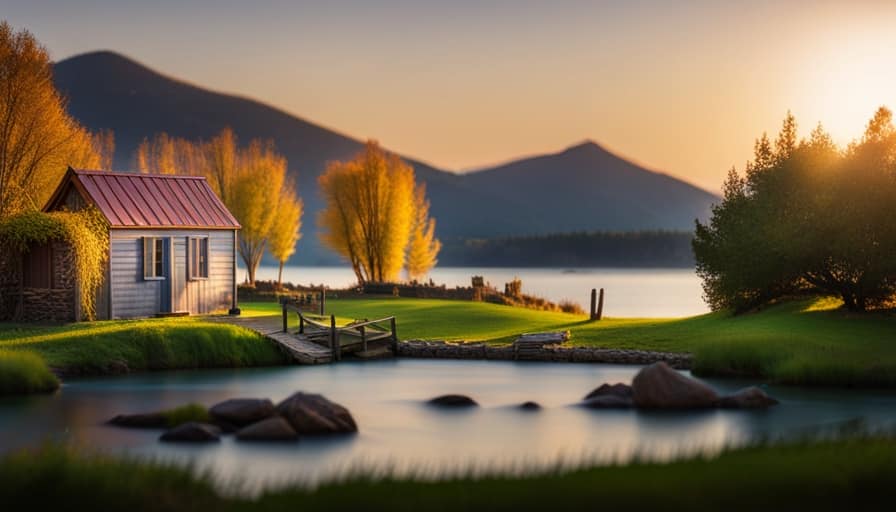
One of the main cost-saving techniques is choosing the right location. Building in a rural area with lower land prices and fewer building restrictions can help keep costs down.
Another factor that affects the cost is the size and design of the tiny house. The simpler the design, the more cost-effective it will be.
Additionally, using alternative building methods such as reclaimed materials or repurposed items can also help reduce costs.
By considering these factors and implementing cost-saving techniques, it’s possible to build a tiny house on a budget.
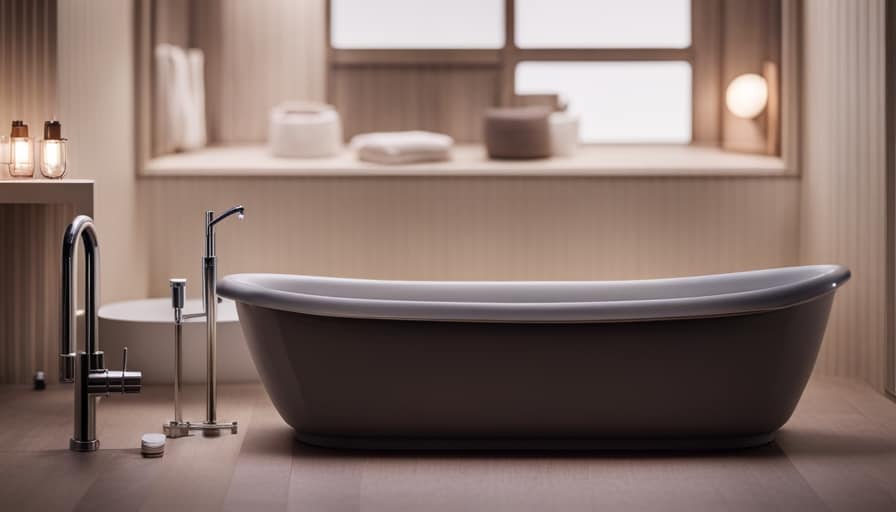
Transitioning into the subsequent section about budget-friendly tiny house building materials, let’s explore how the choice of materials can further impact the overall cost.
Budget-Friendly Tiny House Building Materials
When it comes to building a tiny house on a budget, I can find affordable building materials that will help keep costs down. One area where I can save money is by choosing affordable insulation options. Instead of expensive spray foam insulation, I can opt for alternatives such as fiberglass batts or rigid foam boards. These options are cost-effective and still provide good insulation for the tiny house. Additionally, I can consider low-cost flooring alternatives to save money. Instead of hardwood or tile, I can use vinyl plank flooring or laminate flooring, which are both affordable and durable. By making smart choices when it comes to insulation and flooring, I can build a budget-friendly tiny house without compromising on quality.
| Affordable Insulation Options | Low Cost Flooring Alternatives |
|---|---|
| Fiberglass batts | Vinyl plank flooring |
| Rigid foam boards | Laminate flooring |
Strategies for Saving Money on Tiny House Design
To save money on my tiny house design, I can employ cost-saving strategies such as utilizing multipurpose furniture and maximizing storage space. By incorporating cost-effective design options and implementing DIY tiny house building techniques, I can create a functional and affordable living space.
One key strategy is to choose furniture that serves multiple purposes, such as a sofa that can be converted into a bed or a dining table that can be folded away when not in use. This not only saves money on buying separate pieces of furniture but also maximizes the use of limited space.
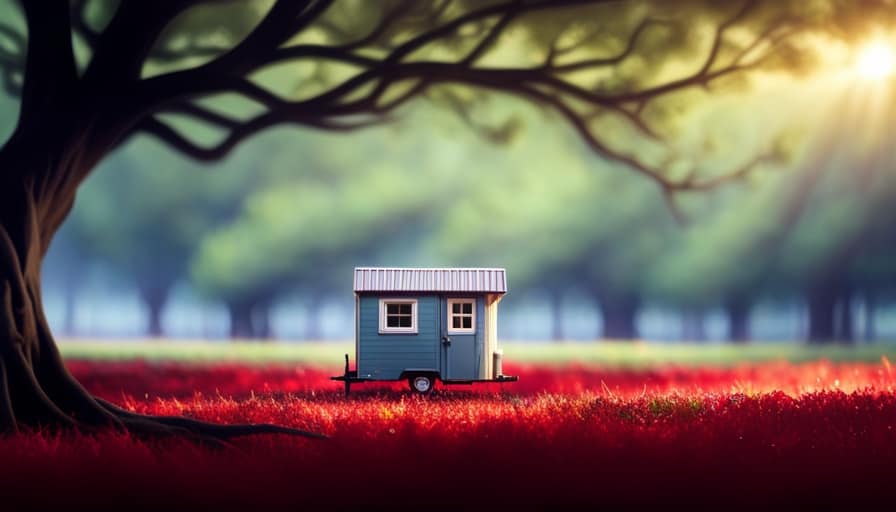
Another cost-saving strategy is to maximize storage space by utilizing built-in shelving, under-bed storage, and wall-mounted organizers. This eliminates the need for additional storage furniture and keeps the space clutter-free.
Creative Ways to Reduce Labor Costs in Tiny House Construction
I can significantly reduce labor costs in tiny house construction by hiring a small team of skilled workers instead of a large crew. This approach allows for effective coordination and streamlined communication, resulting in increased efficiency and reduced labor hours.
Here are some creative ways to further reduce labor costs in tiny house construction:
-
Utilize DIY construction techniques: Encourage the use of DIY construction techniques, where homeowners can actively participate in the building process. This not only reduces labor costs but also creates a sense of ownership and satisfaction.
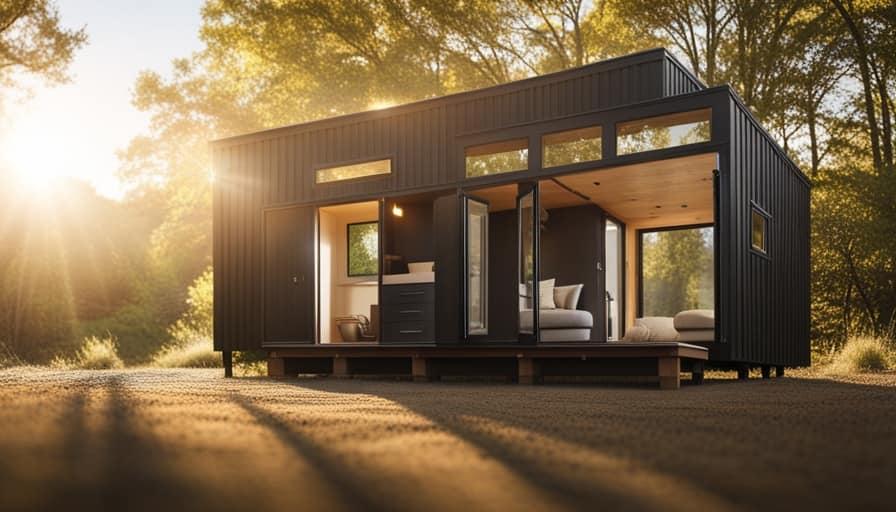
-
Incorporate alternative energy sources: Explore the use of alternative energy sources such as solar panels or wind turbines. By integrating these systems during the construction phase, you can avoid additional labor costs associated with retrofitting.
-
Optimize material usage: Carefully plan and optimize the use of materials to minimize waste. This can be achieved by accurately measuring and cutting materials, as well as repurposing leftover materials for other parts of the project.
-
Prioritize efficient design: Focus on designing a space that maximizes functionality and minimizes unnecessary labor-intensive features. This includes thoughtful space planning, utilizing multipurpose furniture, and incorporating efficient storage solutions.
Implementing these strategies won’t only help reduce labor costs but also contribute to a sustainable and budget-friendly tiny house construction process.

Tips for Finding Affordable Land for Your Tiny House
By researching online listings and networking with local real estate agents, I can easily find affordable land for my tiny house. It is important to explore alternative financing options for purchasing land for a tiny house to keep costs low. One option is owner financing, where the seller acts as the lender and allows you to make monthly payments instead of obtaining a traditional mortgage. Another option is crowdfunding, where you can raise funds from a community of supporters who believe in your tiny house project. Additionally, negotiating with local municipalities for reduced fees and regulations for tiny house living can save you money in the long run. Some municipalities may be open to creating special zoning or permitting regulations for tiny houses, making it easier and more affordable to live in them.
| Financing Options | Benefits |
|---|---|
| Owner Financing | Lower interest rates, flexible payment terms |
| Crowdfunding | Community support, no need for traditional loans |
| Negotiating with Local Municipalities | Reduced fees, simplified regulations |
Finding affordable land for your tiny house is a crucial step in building your dream home while staying within your budget. With the right research, networking, and negotiation skills, you can make your tiny house dreams a reality.
Frequently Asked Questions
What Are the Most Common Mistakes to Avoid When Building a Tiny House on a Tight Budget?
Common pitfalls to avoid when building a tiny house on a tight budget include overestimating DIY skills, not researching local codes and regulations, and not budgeting for unexpected expenses. Cost saving tips include using reclaimed materials and prioritizing essential features.
Are There Any Financing Options Available for Building a Tiny House?
Financing options for building a tiny house include personal loans, RV loans, and construction loans. Pros include flexibility, ownership, and the opportunity to live mortgage-free. Cons may include higher interest rates and stricter qualification requirements.
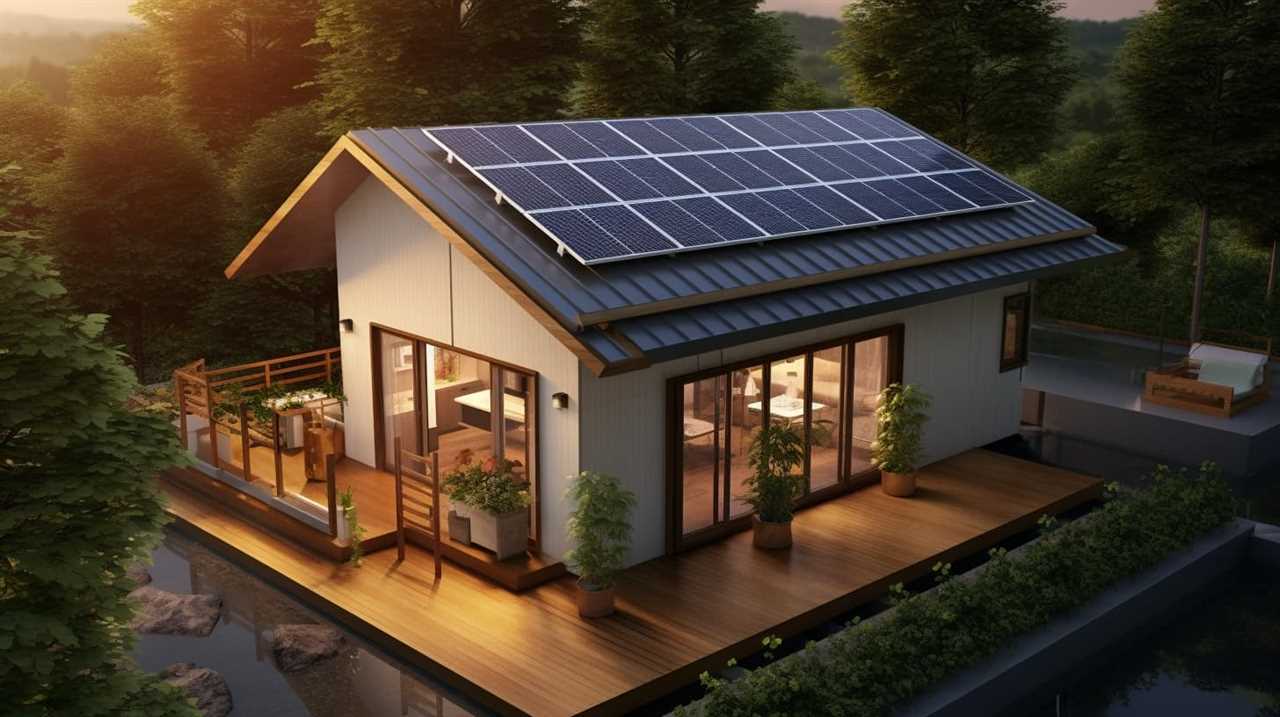
How Much Does It Cost to Maintain a Tiny House on a Yearly Basis?
Maintaining a tiny house on a yearly basis can be cost-effective. By embracing the benefits of living in a tiny house vs. a traditional home and following tips for minimizing maintenance costs, I can save money and enjoy a simpler lifestyle.
Can You Build a Tiny House Using Recycled or Salvaged Materials?
Using recycled and salvaged materials for a tiny house not only saves money, but also gives a sense of purpose and accomplishment. It’s a creative way to build sustainably and reduce waste while creating a unique and personalized home.
Are There Any Legal Restrictions or Regulations to Consider When Finding Land for a Tiny House?
When finding land for a tiny house, it’s important to consider legal restrictions and zoning regulations. Land requirements vary, and financing options may be limited. Maintenance costs can be lower, and eco-friendly building materials are often used.
Conclusion
In conclusion, building a tiny house can be an affordable and cost-effective option for those looking to downsize or live a more minimalist lifestyle. By considering factors such as materials, design strategies, and labor costs, it’s possible to build a tiny house on a tight budget.
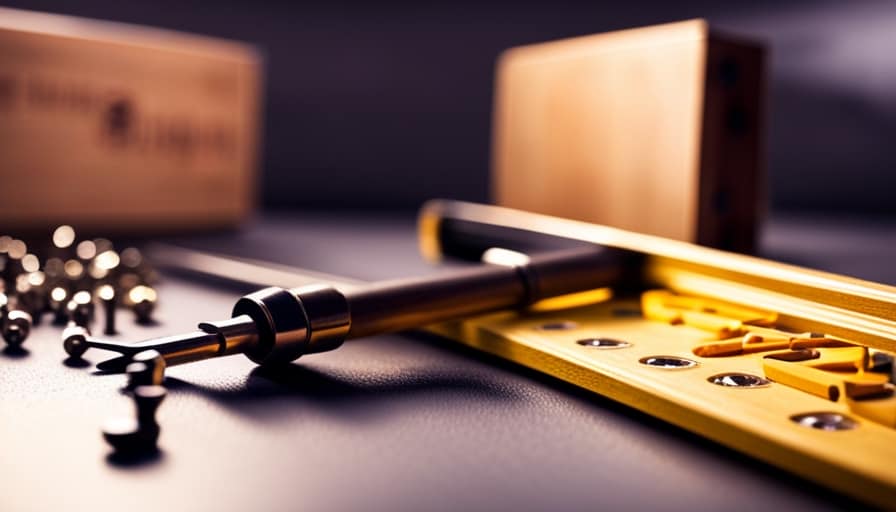
With a little creativity and resourcefulness, you can achieve your dream of owning a tiny house without breaking the bank. So why wait? Start planning and building your own tiny house today!
I’m Theodore, and I love tiny houses. In fact, I’m the author of Tiny House 43, a book about tiny houses that are also tree houses. I think they’re magical places where imaginations can run wild and adventures are just waiting to happen.
While tree houses are often associated with childhood, they can be the perfect adult retreat. They offer a cozy space to relax and unwind, surrounded by nature. And since they’re typically built on stilts or raised platforms, they offer stunning views that traditional homes simply can’t match.
If you’re looking for a unique and romantic getaway, a tree house tiny house might just be the perfect option.
Beginners Guides
How Deep Gravel Tiny House
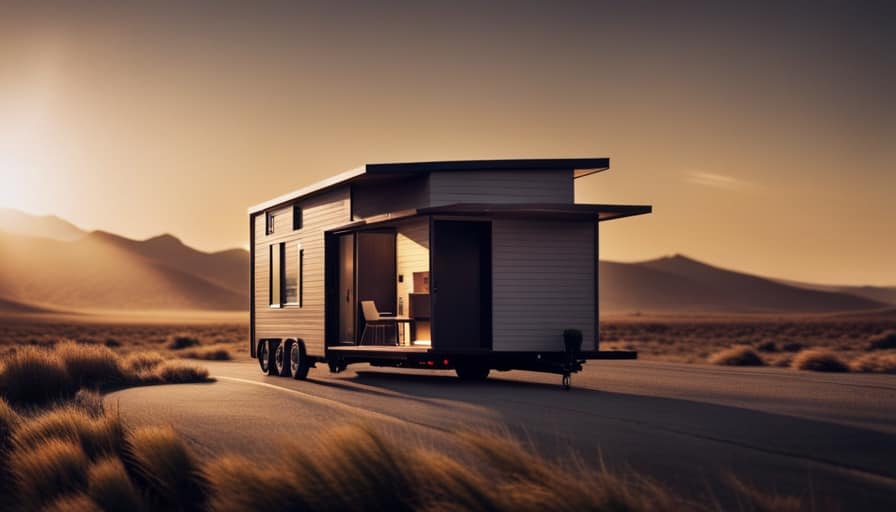
Being a fan of minimalism and eco-friendly living, I have come across the secret treasure of the deep gravel tiny house.
This unique dwelling not only offers a cozy and efficient living space, but also embraces the beauty of nature.
With its minimalistic design and eco-friendly features, the deep gravel tiny house is a true sanctuary.
Join me as I delve into the world of this extraordinary living concept and explore the countless benefits it has to offer.

Key Takeaways
- Deep gravel tiny houses offer a cozy and efficient living space that embraces the beauty of nature while featuring a minimalistic design.
- The cost of building a deep gravel tiny house ranges from $20,000 to $50,000, excluding land and permits, and finding suitable land can be challenging due to zoning regulations.
- Living in a deep gravel tiny house provides cost-effective living, encourages a decluttered and minimalist lifestyle, allows for a nomadic lifestyle, and promotes environmental sustainability.
- Designing the perfect deep gravel tiny house involves maximizing functionality and comfort, optimizing space, utilizing multifunctional furniture, and incorporating storage solutions that maximize vertical space.
The Deep Gravel Tiny House: An Introduction
As I begin to explore the concept of the Deep Gravel Tiny House, I’m fascinated by its unique design and potential.
The cost of building a Deep Gravel Tiny House can vary depending on factors such as size, materials used, and location. On average, it can range from $20,000 to $50,000. However, it’s important to note that this cost doesn’t include the land or any additional permits that may be required.
Speaking of permits, one of the challenges of zoning regulations for Deep Gravel Tiny Houses is that they’re often not specifically addressed in existing regulations. This can make it difficult to find suitable land or navigate the legal requirements.
It’s crucial to research local zoning laws and work with professionals who’ve experience in this area to ensure compliance and a smooth process.
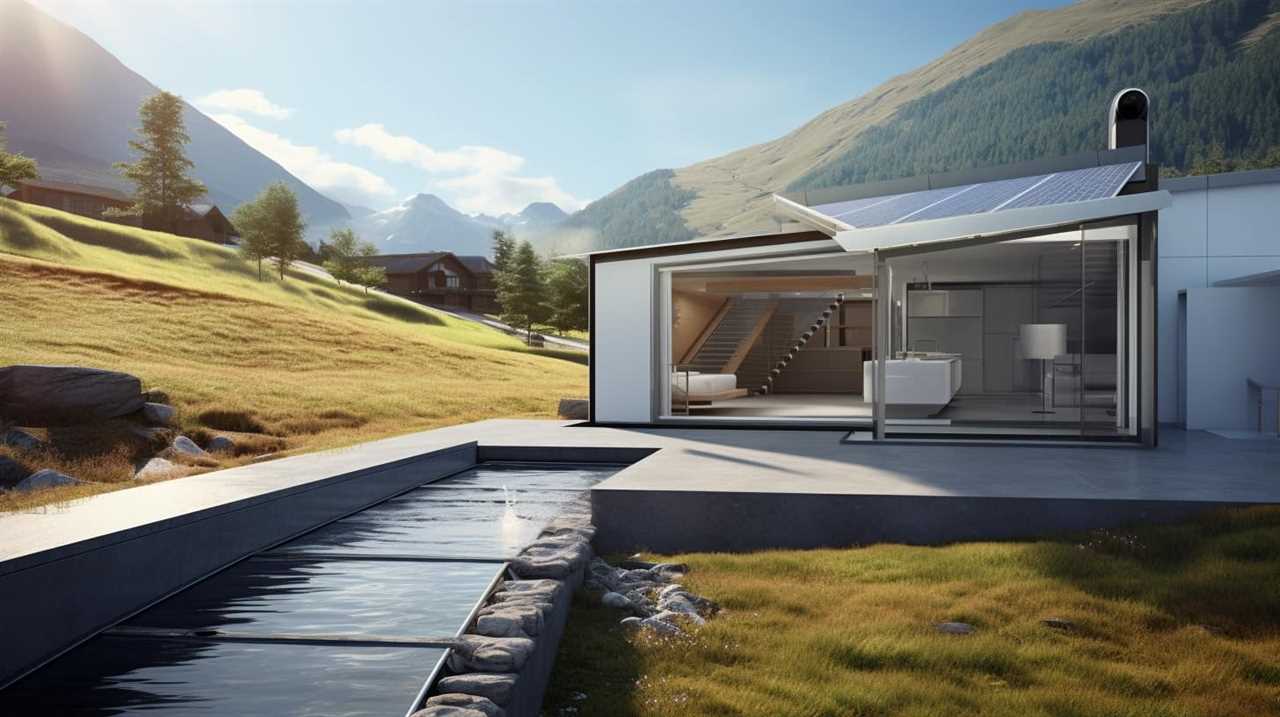
The Benefits of Living in a Deep Gravel Tiny House
For me, living in a Deep Gravel Tiny House offers a sense of freedom and simplicity. The advantages of this lifestyle are numerous. Firstly, the cost of living is significantly reduced. With a smaller space to heat, cool, and maintain, utility bills are minimized. Additionally, the compact size encourages a decluttered and minimalist lifestyle, allowing for a more organized and stress-free living environment. Secondly, the mobility of a tiny house on deep gravel allows for a nomadic lifestyle, giving the freedom to travel and explore new places while still having a cozy and comfortable home. Lastly, living in a deep gravel tiny house promotes environmental sustainability. The smaller footprint reduces energy consumption and encourages the use of eco-friendly materials. Overall, the deep gravel tiny house lifestyle offers a unique and fulfilling way of living, combining simplicity, freedom, and sustainability.
| Advantages | Lifestyle |
|---|---|
| Cost-effective | Decluttered and minimalist |
| Mobility | Nomadic lifestyle |
| Environmental sustainability | Cozy and comfortable home |
Designing the Perfect Deep Gravel Tiny House
One of the key considerations when designing the perfect deep gravel tiny house is to ensure that the space is maximized for functionality and comfort. Designing challenges in such a small space can be quite daunting, but with careful planning and creativity, it’s possible to create a space that feels spacious and efficient.
Space optimization is crucial in a deep gravel tiny house, as every square inch counts. Utilizing multifunctional furniture, such as a sofa that can be converted into a bed or a dining table that can be collapsed when not in use, is a great way to save space.
Additionally, incorporating storage solutions that maximize vertical space, such as wall-mounted shelves and cabinets, can help keep the living area clutter-free. By carefully considering the challenges of designing in a small space and prioritizing space optimization, the perfect deep gravel tiny house can be achieved.
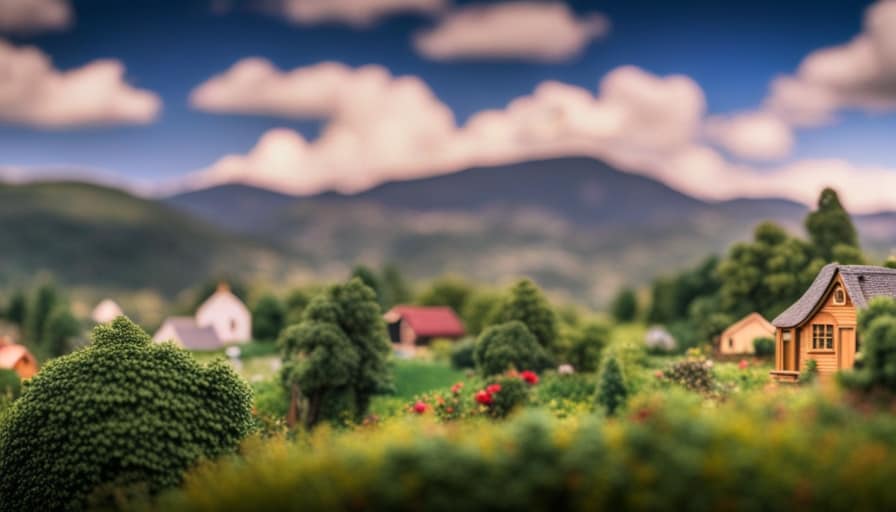
Sustainable Features of the Deep Gravel Tiny House
I love the sustainable features of my Deep Gravel Tiny House. One of the key aspects of its eco-friendliness is the use of environmentally friendly materials. From the renewable bamboo flooring to the reclaimed wood accents, every element of the house is chosen with sustainability in mind.
The energy-efficient design is another highlight. The house is equipped with solar panels that power the entire space, reducing reliance on non-renewable energy sources. Additionally, the well-insulated walls and energy-efficient appliances help minimize energy consumption.
These sustainable features not only reduce the environmental impact of the house but also contribute to a more comfortable and cost-effective living experience.
Now that you know about the sustainable features, let’s move on to some tips for making the most of your deep gravel tiny house space.

Tips for Making the Most of Your Deep Gravel Tiny House Space
To maximize your deep gravel tiny house space, utilize clever storage solutions and multifunctional furniture.
Maximizing storage is essential in a small living space like a deep gravel tiny house. Consider using vertical storage options such as shelves or hanging organizers to make the most of your walls. Utilize under-bed storage containers or drawers to keep your belongings organized and out of sight.
Another great way to maximize storage is by using furniture that serves multiple purposes. Look for sofas and chairs that can also be used as storage units, or tables that can be extended or folded down when not in use.
Frequently Asked Questions
What Are the Dimensions of a Deep Gravel Tiny House?
The dimensions of a deep gravel tiny house depend on the specific design and preferences of the builder. However, typical dimensions range from 8 to 30 feet in length and 8 to 12 feet in width.
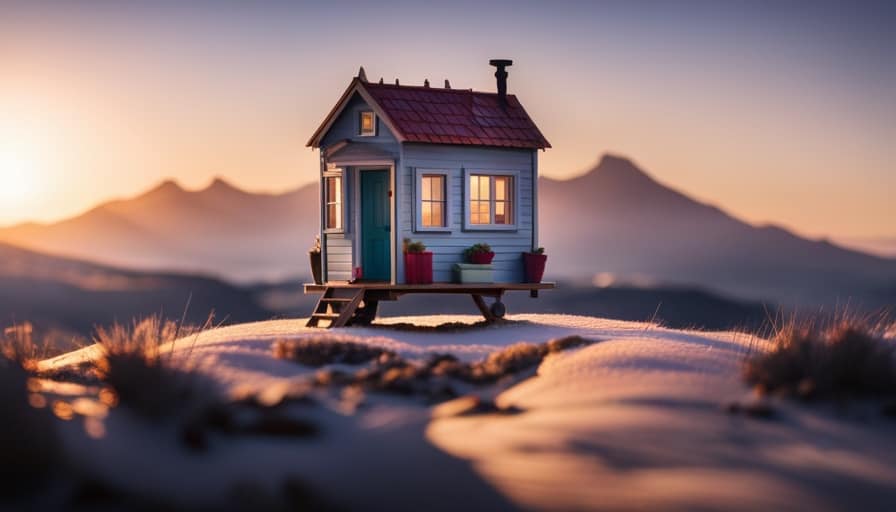
How Much Does It Cost to Build a Deep Gravel Tiny House?
Building a deep gravel tiny house can cost around $30,000 to $60,000, depending on various factors such as size, materials, and location. Construction typically takes several months, with careful planning and attention to detail ensuring a beautiful and functional home.
Can I Customize the Layout and Design of a Deep Gravel Tiny House?
Yes, you can customize the layout and design of a Deep Gravel Tiny House. There are various customization options available, allowing you to make interior design choices that suit your preferences and needs.
Is It Possible to Live in a Deep Gravel Tiny House off the Grid?
Living off grid in a deep gravel tiny house is definitely possible. With careful planning and sustainable practices, you can harness renewable energy sources, collect rainwater, and minimize your environmental impact while enjoying a simpler, self-sufficient lifestyle.
Are There Any Specific Permits or Regulations I Need to Consider When Building a Deep Gravel Tiny House?
When building a deep gravel tiny house, it’s essential to consider permit requirements and construction regulations. It’s important to research and comply with local regulations to ensure a safe and legal build.
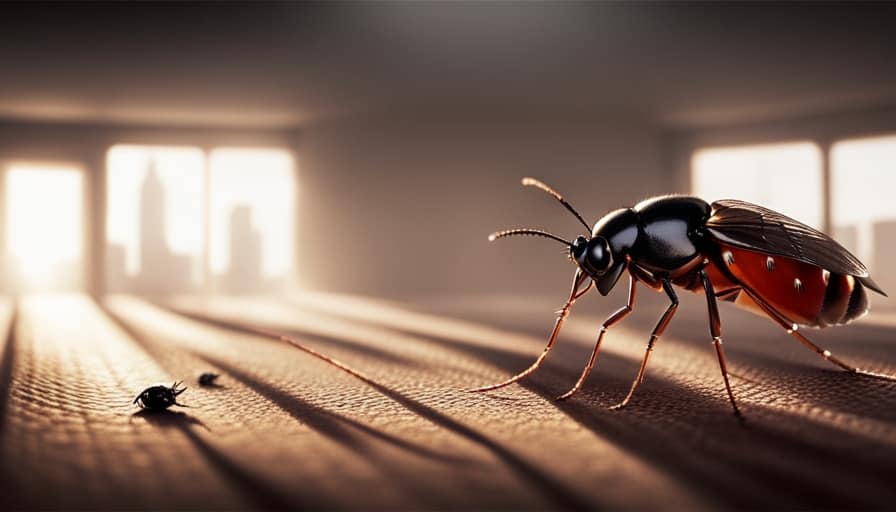
Conclusion
In conclusion, the Deep Gravel Tiny House offers a unique and sustainable living experience. With its innovative design and use of sustainable features, it provides a comfortable and eco-friendly living space.
Living in a Deep Gravel Tiny House allows you to minimize your environmental impact while still enjoying all the comforts of a traditional home.
So, why settle for ordinary when you can live in a Deep Gravel Tiny House and experience the extraordinary?
I’m Theodore, and I love tiny houses. In fact, I’m the author of Tiny House 43, a book about tiny houses that are also tree houses. I think they’re magical places where imaginations can run wild and adventures are just waiting to happen.
While tree houses are often associated with childhood, they can be the perfect adult retreat. They offer a cozy space to relax and unwind, surrounded by nature. And since they’re typically built on stilts or raised platforms, they offer stunning views that traditional homes simply can’t match.
If you’re looking for a unique and romantic getaway, a tree house tiny house might just be the perfect option.
Beginners Guides
How Deep Should a Tiny House Closet Be
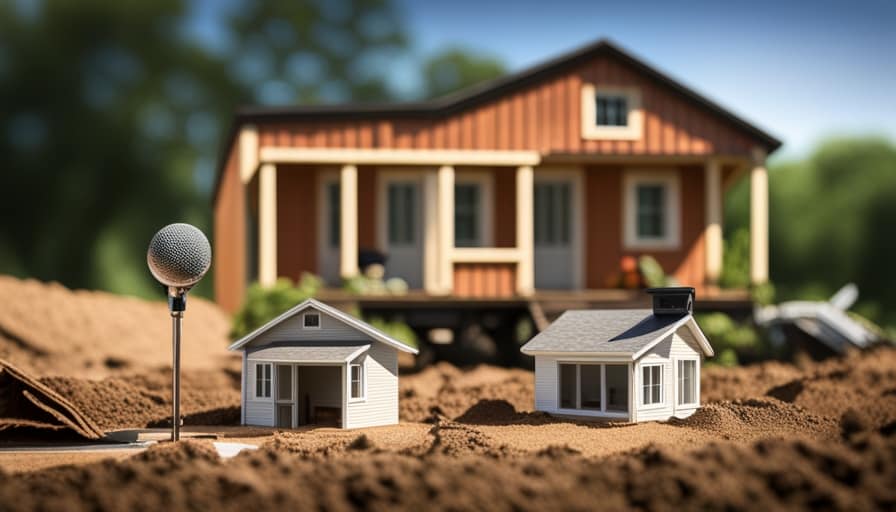
Picture yourself entering your snug tiny home, meticulously designed with every inch of space in mind. Join me on a journey into the realm of tiny house living as we delve into a crucial component: the closet.
How deep should a tiny house closet be? In this article, I’ll share my expertise and provide valuable insights on determining the perfect closet depth for efficient storage.
With creative solutions and expert tips, you’ll be able to maximize your closet space and create the organized oasis you’ve always dreamed of.
Key Takeaways
- Closet depth is crucial for organization and space-saving in a tiny house.
- The right balance between depth and space is vital for maximizing storage capacity.
- Factors such as available space and clothing storage requirements should be considered when determining closet depth.
- The ideal closet depth for efficient storage in a tiny house is generally around 24 to 30 inches.
The Importance of Closet Depth in a Tiny House
I always find the closet depth to be crucial in my tiny house. When it comes to closet organization and space saving solutions, having the right depth is essential.
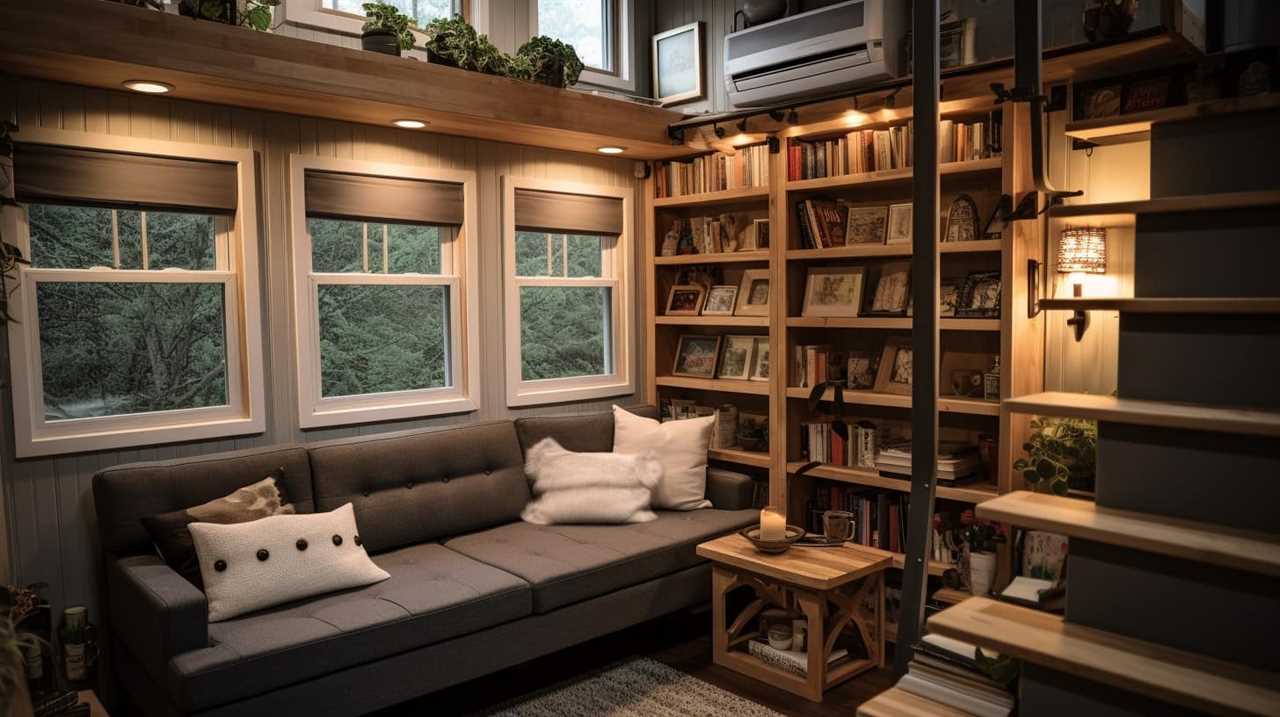
In a small living space, every inch matters, and maximizing storage capacity is key. A shallow closet depth can limit your options and make it difficult to keep your belongings organized. On the other hand, a closet that’s too deep can waste valuable space and make it challenging to access your items efficiently.
Therefore, finding the perfect balance is vital. In the next section, we’ll discuss the factors to consider when determining closet depth for tiny houses, which will help you make an informed decision for your own space.
Factors to Consider When Determining Closet Depth for Tiny Houses
When determining closet depth for tiny houses, it’s important to consider a few factors to ensure maximum functionality and efficiency. Here are three factors to consider when determining the closet depth for your tiny house:
-
Available space: Take into account the overall square footage of your tiny house and allocate the appropriate amount of space for your closet. Consider other storage needs and prioritize accordingly.
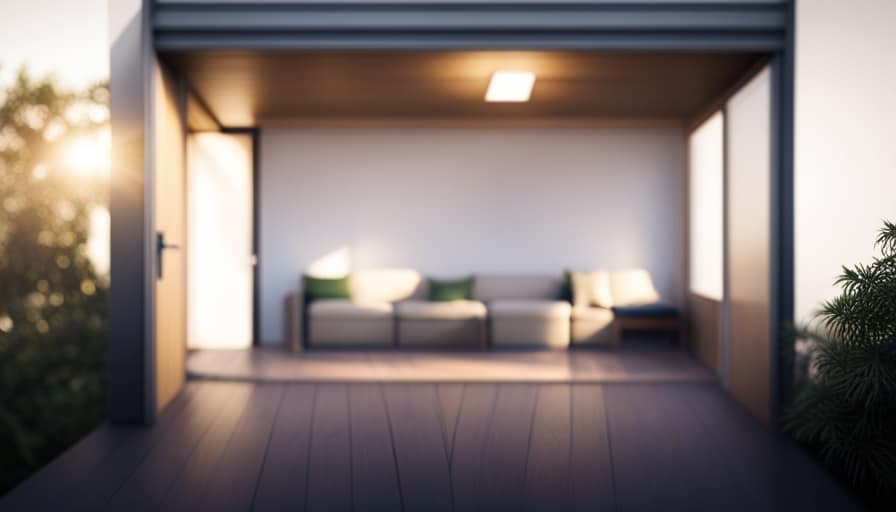
-
Clothing storage requirements: Assess your clothing collection and determine how much space you need for hanging clothes, folded items, and accessories. This will help you determine the depth needed for your closet to accommodate all your clothing storage needs.
-
Space-saving solutions: Look for innovative storage solutions that can maximize the use of your closet space. Consider using hanging organizers, shelves, and adjustable rods to make the most of the available space.
Considering these factors will help you determine the optimal closet depth for your tiny house, ensuring efficient storage solutions.
Recommended Closet Depth for Efficient Storage in Tiny Houses
To ensure efficient storage in tiny houses, a recommended closet depth is determined based on available space and storage needs. The ideal measurements for a tiny house closet can vary depending on the layout and design of the space, but generally, a depth of around 24 to 30 inches is recommended. This allows for enough space to hang clothes and store folded items without taking up too much precious square footage. Additionally, incorporating space-saving closet organization ideas can maximize the functionality of the closet. Utilizing vertical space with shelves or hanging organizers, using slim hangers, and installing hooks or racks on the closet doors can help optimize storage in a tiny house closet. By carefully considering the dimensions and implementing smart storage solutions, a tiny house closet can provide efficient storage while still maintaining a compact footprint.
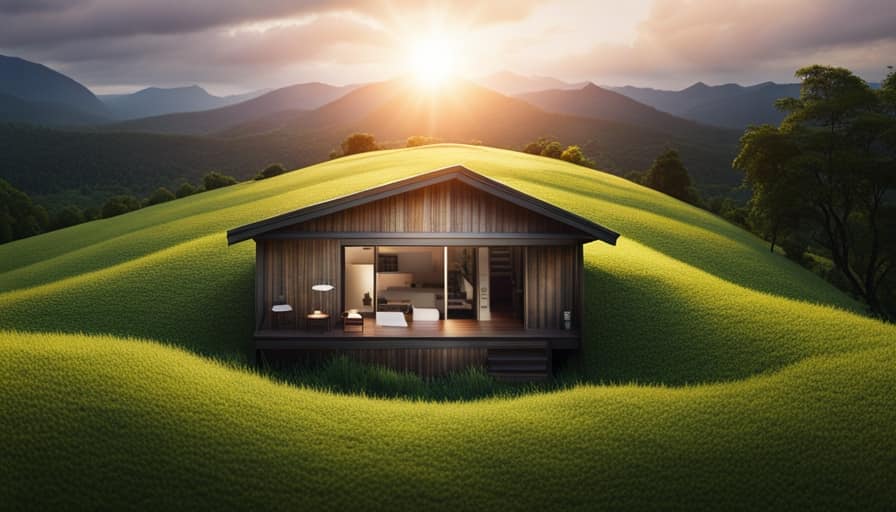
| Dimensions (inches) | Hanging Space | Shelves | Drawers |
|---|---|---|---|
| Recommended Range | 24-30 | 2-3 | 1-2 |
Creative Solutions for Maximizing Closet Depth in Tiny Houses
Maximizing closet depth in tiny houses requires thinking outside the box and exploring innovative storage solutions. When space is limited, it’s important to make the most of every inch. Here are three creative solutions for maximizing storage in tiny house closets:
-
Utilize vertical space: Install hanging rods that extend from floor to ceiling to make use of the entire height of the closet. This allows for multiple levels of hanging clothes or the addition of shelving units above the rods.
-
Install adjustable shelves: Use adjustable shelves that can be moved up or down as needed. This allows for customization based on the size and type of items being stored, ensuring efficient use of the available space.
-
Use slim hangers: Opt for slim hangers that take up less space and allow for more items to be hung in the closet. This can significantly increase the overall storage capacity.
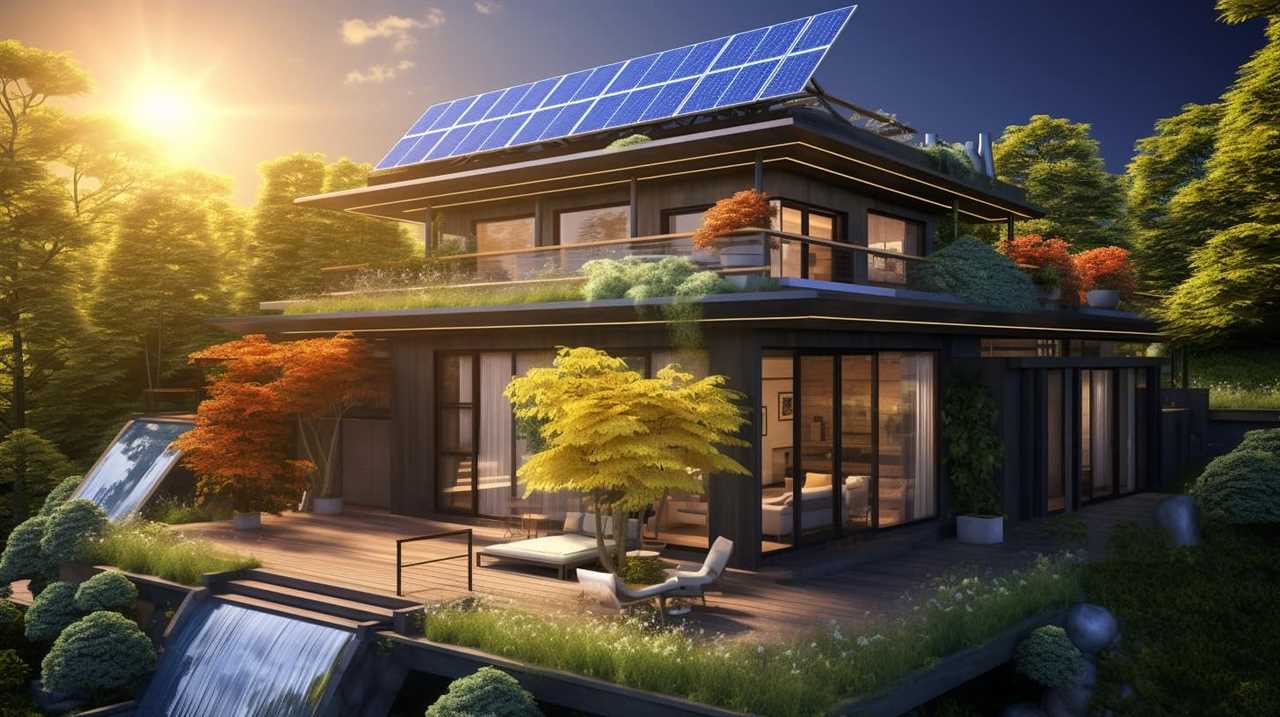
Expert Tips for Designing the Perfect Tiny House Closet
I’ve gathered some expert tips that can help you design the perfect tiny house closet. When it comes to organizing a tiny house closet, maximizing every inch of space is crucial. Here are some tips to help you make the most of your small closet:
| Tips for organizing a tiny house closet | Common mistakes to avoid when designing a tiny house closet |
|---|---|
| Utilize vertical space with shelves | Neglecting to measure the available space accurately |
| Use hanging organizers for accessories | Overcrowding the closet with unnecessary items |
| Install hooks and rods for additional storage | Ignoring the need for proper lighting in the closet |
| Sort and categorize items for easy access | Failing to consider the type and size of clothing |
| Make use of under-bed storage | Neglecting to incorporate adjustable shelving |
Frequently Asked Questions
What Are Some Alternative Storage Solutions for Tiny Houses Without a Traditional Closet?
Alternative storage solutions for tiny houses without a traditional closet include maximizing vertical space by using wall-mounted shelves, hanging organizers, and under-bed storage bins. These options allow for efficient use of limited space.
How Can I Make the Most Out of a Limited Closet Space in a Tiny House?
To maximize vertical space in a tiny house closet, I suggest using adjustable shelving and hanging organizers. Additionally, utilizing under bed storage can be a great way to store items that don’t fit in the limited closet space.
Are There Any Specific Measurements or Guidelines to Follow When Designing a Closet for a Tiny House?
When designing a closet for a tiny house, it’s important to prioritize storage space organization and maximizing vertical storage. Specific measurements and guidelines can help ensure efficient use of limited space.

What Are the Advantages of Having a Deep Closet in a Tiny House?
Having a deep closet in a tiny house offers several advantages. It allows for better organization and storage of clothing and other items, maximizing the limited closet space available.
Are There Any Specific Items or Clothing Pieces That Are Not Recommended to Be Stored in a Tiny House Closet?
Some items, like bulky winter coats or large suitcases, may not be ideal for storing in a tiny house closet. Maximizing storage in a small space requires careful consideration of what to keep.
Conclusion
In conclusion, when designing a tiny house closet, it’s crucial to consider the depth to ensure efficient storage.
According to a survey conducted among tiny house owners, it was found that the recommended closet depth for optimal organization and functionality is between 24 and 30 inches.

By maximizing closet depth through creative solutions such as using vertical space and utilizing adjustable shelving, tiny house dwellers can make the most out of their limited storage area.
I’m Theodore, and I love tiny houses. In fact, I’m the author of Tiny House 43, a book about tiny houses that are also tree houses. I think they’re magical places where imaginations can run wild and adventures are just waiting to happen.
While tree houses are often associated with childhood, they can be the perfect adult retreat. They offer a cozy space to relax and unwind, surrounded by nature. And since they’re typically built on stilts or raised platforms, they offer stunning views that traditional homes simply can’t match.
If you’re looking for a unique and romantic getaway, a tree house tiny house might just be the perfect option.
-

 Beginners Guides2 weeks ago
Beginners Guides2 weeks agoHow To Buy A Tesla Tiny House
-

 Energy Efficiency2 months ago
Energy Efficiency2 months agoBest Tiny Homes For Cold Climates
-

 Beginners Guides2 weeks ago
Beginners Guides2 weeks agoTiny House Nation Where Are They Now Stephanie
-

 Tiny House Resources (e.g., legalities, cost, insurance, FAQs)2 months ago
Tiny House Resources (e.g., legalities, cost, insurance, FAQs)2 months agoDo Tiny Homes Need Planning Permission?
-

 Beginners Guides3 weeks ago
Beginners Guides3 weeks agoFrom The Show Tiny House Nation How Many Keep Their Tiny House?
-

 Beginners Guides2 months ago
Beginners Guides2 months agoUsing a Climbing Net For Treehouse Construction
-

 Beginners Guides2 months ago
Beginners Guides2 months agoHow to Build a Treehouse Without Drilling Into the Tree
-

 Beginners Guides3 weeks ago
Beginners Guides3 weeks agoTiny House Nation Who Pays For The Houses















